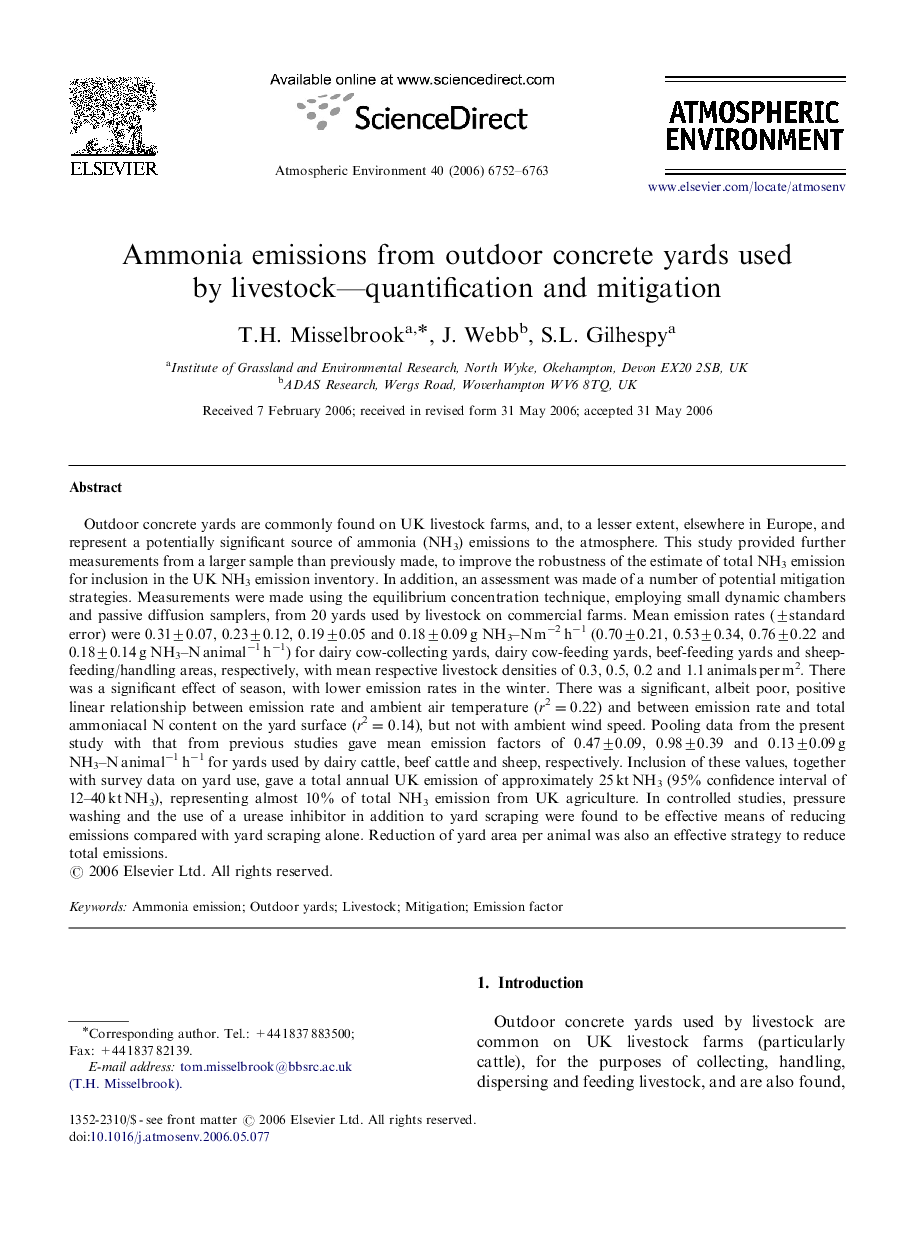| Article ID | Journal | Published Year | Pages | File Type |
|---|---|---|---|---|
| 4443869 | Atmospheric Environment | 2006 | 12 Pages |
Outdoor concrete yards are commonly found on UK livestock farms, and, to a lesser extent, elsewhere in Europe, and represent a potentially significant source of ammonia (NH3) emissions to the atmosphere. This study provided further measurements from a larger sample than previously made, to improve the robustness of the estimate of total NH3 emission for inclusion in the UK NH3 emission inventory. In addition, an assessment was made of a number of potential mitigation strategies. Measurements were made using the equilibrium concentration technique, employing small dynamic chambers and passive diffusion samplers, from 20 yards used by livestock on commercial farms. Mean emission rates (±standard error) were 0.31±0.07, 0.23±0.12, 0.19±0.05 and 0.18±0.09 g NH3–N m−2 h−1 (0.70±0.21, 0.53±0.34, 0.76±0.22 and 0.18±0.14 g NH3–N animal−1 h−1) for dairy cow-collecting yards, dairy cow-feeding yards, beef-feeding yards and sheep-feeding/handling areas, respectively, with mean respective livestock densities of 0.3, 0.5, 0.2 and 1.1 animals per m2. There was a significant effect of season, with lower emission rates in the winter. There was a significant, albeit poor, positive linear relationship between emission rate and ambient air temperature (r2=0.22) and between emission rate and total ammoniacal N content on the yard surface (r2=0.14), but not with ambient wind speed. Pooling data from the present study with that from previous studies gave mean emission factors of 0.47±0.09, 0.98±0.39 and 0.13±0.09 g NH3–N animal−1 h−1 for yards used by dairy cattle, beef cattle and sheep, respectively. Inclusion of these values, together with survey data on yard use, gave a total annual UK emission of approximately 25 kt NH3 (95% confidence interval of 12–40 kt NH3), representing almost 10% of total NH3 emission from UK agriculture. In controlled studies, pressure washing and the use of a urease inhibitor in addition to yard scraping were found to be effective means of reducing emissions compared with yard scraping alone. Reduction of yard area per animal was also an effective strategy to reduce total emissions.
